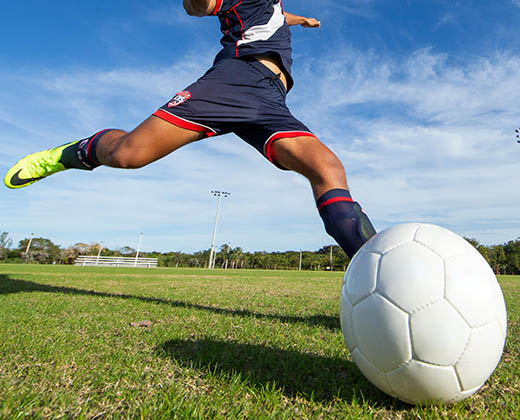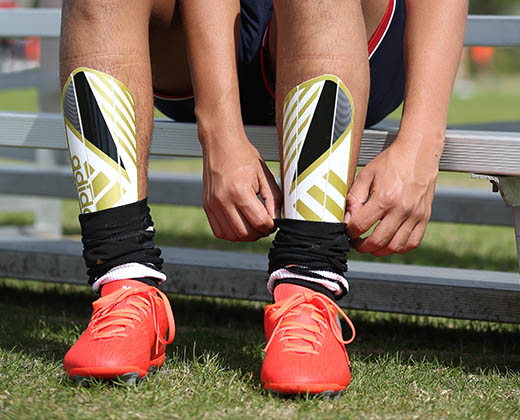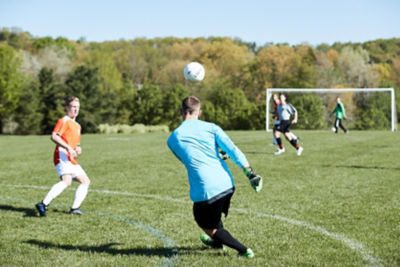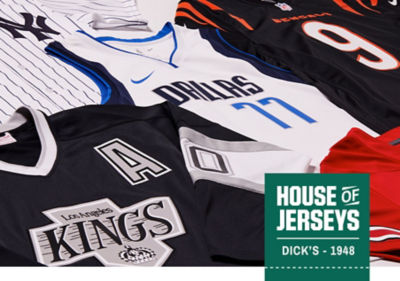The Rules of Soccer
Brush up on the order of the game with this Pro Tips guide to help prepare for your next match.
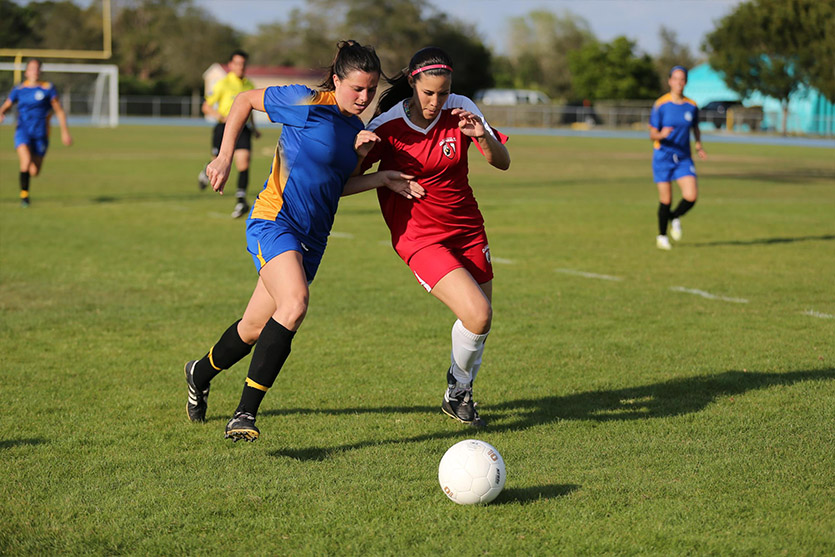
What is a handball? What is the offside rule for soccer? What’s the difference between an indirect and direct free kick?
There are a lot of rules in soccer. Understanding these protocols of the pitch can help you become a better, more disciplined athlete. Pro Tips is here to break down the rules of soccer and help you become more educated on the game. Learn about the different types of fouls, cards the referee carries and when to know if you’re offside.
KNOW THE SOCCER FIELD
Before you dive into the rules, you should familiarize yourself with the soccer field itself. This is the surface where your matches take place. Also, be aware that you can face repercussions depending on where you are on the pitch.
For example, if a player has the ball and an opposing player happens to trip them in the penalty area, a penalty kick is awarded to the offensive player. However, if the foul occurs outside of the penalty area, a free kick will be given instead.
Be sure to be constantly mindful of your surroundings on the pitch.
CONSEQUENCES FOR SOCCER FOULS
Fouls are known as “offenses” in soccer. If a player commits an offense, they can receive discipline or a warning from the referee.
Officials categorize these offenses by the foul’s outcome.
- Direct Free Kick Fouls: These offenses result from a handball or other contact fouls. Direct free kick fouls occur when a player uses reckless, careless or excessive force. Examples of a direct free kick foul include charging at another player, pushing, tackling or challenging, tripping and handling the ball deliberately.
- Indirect Free Kick Fouls: This is when a player impedes or delays the progress of the game. For example, if officials award a goal kick, and the player kicks the ball away from the goalkeeper, this could be whistled as a foul.
BONUS PRO TIP: It is illegal for goalkeepers to handle the ball outside the penalty area. If this occurs, he or she will be whistled for an indirect free kick foul. Also, the goalkeeper cannot pick up the ball after dropping it themselves, or if it’s passed back by a teammate.
TAKING THE FREE KICKS
As stated earlier, there are two types of free kicks a team can take: direct and indirect. On a direct free kick, the player taking the kick may score. However, on an indirect free kick, another player must touch the ball prior to scoring.
The referee will indicate the type of kick with a signal.
- Direct Free Kick: The referee will point toward the goal.
- Indirect Free Kick: The referee will raise an arm over their head. Their arm must stay upright until the player has struck the ball and it touches another player or goes out of bounds.
Free kicks take place where the foul was called by the referee. The opposing players must be at least 10 feet away from the ball upon setup.
Need more information on free kicks? Brush up on the fundamentals and how to take a free kick with these Pro Tips. Also, when defending a free kick, you will need to set up a wall. Are you on the defensive side? Learn the basics of setting up a strong wall with this soccer guide.
THE PENALTY KICK
When a foul occurs in the box, officials award the opposing team a penalty kick. Depending on how serious the foul is, a player can be given a yellow or red card.
When taking a penalty, the ball must be placed on the penalty mark. Whoever is taking the penalty must indicate that to the referee. Meanwhile, the opposing goalkeeper must take their place on the goal line. Goalkeepers must remain on the goal line until the player kicks the ball. If the goalkeeper jumps off the line too early, the player will retake the kick.
The remaining players must be positioned right outside of the penalty area. Once the ball is struck, those players may rush forward and attempt to rebound or defend the goal.
The player who takes the penalty kick must kick the ball forward. Passing between teammates is illegal on the original, first kick. If the goalkeeper blocks the ball — or it hits off the posts or crossbar — and bounces back into play, another player may score on the rebound.
Check out these tips to get you prepared for a successful penalty kick.
YELLOW AND RED CARDS
The referee carries two types of cards in his or her pocket: yellow and red.
If a player is reprimanded by the referee and then goes back to commit another foul, they could be issued a yellow card. A yellow card also serves as a warning, but with higher significance. A player can remain on the pitch with a yellow card.
If a player earns two yellow cards, this equates to a red card.
A red card indicates the most serious fouls, as deemed by the referee. Any player dealt a red card must immediately exit the pitch and leave the field of play. In some leagues, a red card can also carry a one-game suspension.
When a player earns a red card, there can be no fill-in substitution. This means the penalized team will be forced to play with 10 players. If a goalkeeper earns a red card, a team can make a substitution to bring in another goalkeeper. However, in these situations, another player must exit the pitch to bring the team’s count on the field to 10.
BONUS PRO TIP: Yellow and red cards aren’t just for players. If a coach acts in an unsportsmanlike manner, they may earn a yellow or red card, too.
WHAT IS OFFSIDES IN SOCCER?
First and foremost, offside is not a foul. If a player is whistled offside, then the ball will be placed where the offside position was called, and an indirect free kick is given.
Players will be whistled for offside usually by the assistant referees. These officials run up and down one side of the touch line, in line with the second-to-last defender or the athlete closest to the goalkeeper. The referee will raise their flag in the air and then level it with an outstretched arm.
Who is the second-to-last defender? The last defender is usually the goalkeeper, unless they come far off their line. The second-to-last defender will be the teammate closest to the goalkeeper.
A player is offside if:
- Their head, body or feet is in the opponent’s half of the pitch.
- Any part of their head, body or feet is nearer to the opponent’s goal line than the second-to-last defender and the ball.
While hands and arms aren’t defining factors to an offside call, a player’s shoulders classify as part of the “body.” The key to offside is that the call will come when the ball is touched. If a player remains onside when the ball is touched but outruns the second-to-last defender to find themselves in a one-on-one situation, then the player is onside.
BONUS PRO TIP: Players cannot be offside if there is a goal kick, throw-in or corner kick.
Soccer is a fast-paced game with plenty of action. While there aren’t as many stops compared to other sports, soccer will have moments when the game pauses. Examples can include free kicks or out-of-bounds stoppages.
Remember to educate yourself about the rules of the game and aim to become a disciplined player.
Looking for more tips to improve your soccer skills? Discover additional insight from professional soccer player Becky Sauerbrunn on how to maximize your first touch and practicing acceleration on the pitch.


